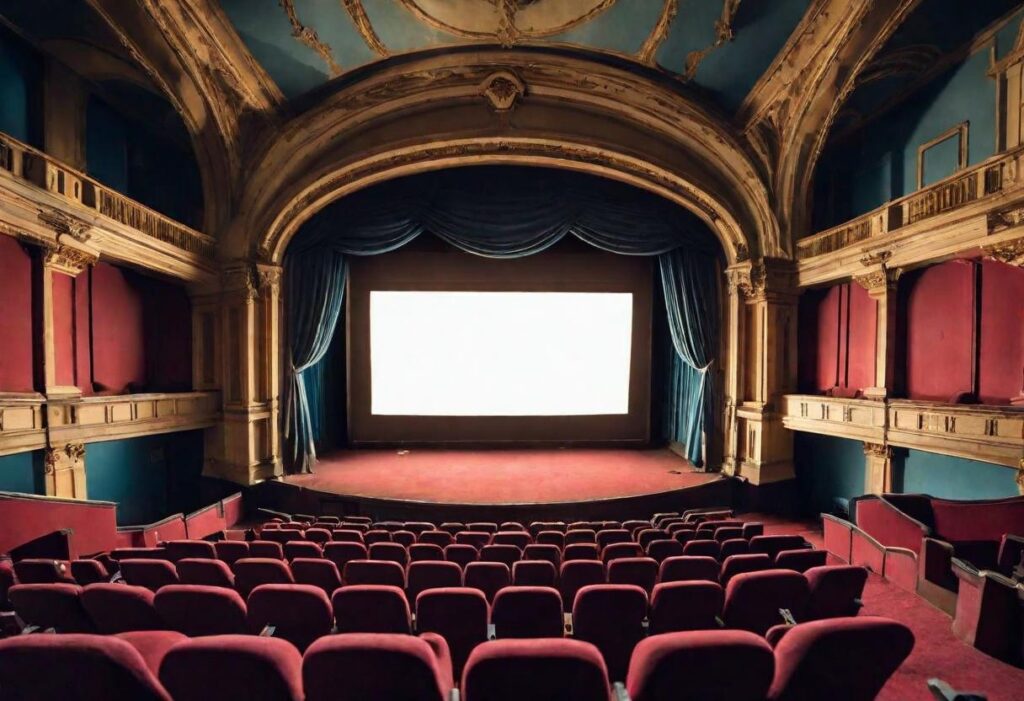In the ever-evolving landscape of cinema, single screen theaters hold a special place in the hearts of moviegoers. These iconic establishments, once bustling with life, are now struggling to compete against the rise of multiplexes and the convenience of streaming services. However, there is a growing movement aimed at reviving these historic venues, driven by a sense of nostalgia and a desire to preserve cinematic heritage. In this article, we explore the potential for nostalgia to save single screen cinemas and examine the strategies that can breathe new life into these cherished spaces.
Table of Contents
ToggleThe Golden Era of Single Screen Theater
Single screen cinemas were once the beating heart of the film industry. These grand theaters, with their ornate architecture and plush interiors, offered a unique and immersive movie-going experience. From the early 20th century through the 1970s, single screen cinemas were the primary venues for film exhibition. They hosted premieres, attracted large audiences, and became cultural landmarks in their communities.
Cultural Significance and Community Ties
The cultural significance of single screen cinemas cannot be overstated. These theaters were more than just places to watch movies; they were social hubs where people gathered to experience the magic of cinema together. The sense of community fostered by these venues created lasting memories and emotional connections. As the film industry evolved, multiplexes and home entertainment systems began to dominate, leading to the decline of single screen cinemas. However, the nostalgia for these classic theaters remains strong.
Challenges Facing Single Screen Theater
Despite their nostalgic appeal, single screen cinemas face numerous challenges in the modern entertainment landscape. The rise of multiplexes, with their ability to offer multiple films simultaneously, has significantly reduced the audience base for single screen theaters. Additionally, the convenience of streaming services has shifted viewing habits, making it difficult for traditional cinemas to attract audiences.
Economic Pressures and Operational Costs
Operating a single screen cinema is a costly endeavor. Maintenance of historic buildings, upgrading projection equipment, and competing with modern amenities in multiplexes require significant financial investment. The economic pressures faced by single screen cinemas often lead to closures, as owners struggle to maintain profitability.
Adapting to Technological Advancements
Technological advancements in the film industry have also impacted single screen cinemas. The transition from film to digital projection, the demand for high-definition sound systems, and the need for advanced booking systems are essential to meet modern audience expectations. However, these upgrades come with substantial costs, which can be prohibitive for smaller, independent theaters.

The Power of Nostalgia: A Potential Resurgence
Nostalgia has a powerful influence on consumer behavior. The emotional connection people have with single screen cinemas can be harnessed to revive these venues. By tapping into the longing for the golden age of cinema, single screen theaters can attract audiences who seek a unique and memorable movie-going experience.
Restoring Historical Charm
One of the key strategies to revive single screen cinemas is to restore their historical charm. Preserving the architectural beauty and vintage interiors of these theaters can create a sense of authenticity and nostalgia that resonates with audiences. Restoration projects that highlight the theater’s history and cultural significance can attract both local patrons and tourists.
Curating Unique Film Experiences
Single screen cinemas have the advantage of offering a curated film experience that multiplexes cannot match. By focusing on classic films, independent releases, and special events such as film festivals and themed screenings, single screen theaters can differentiate themselves from mainstream venues. These unique offerings can draw cinephiles and enthusiasts looking for a distinctive movie-going experience.
Community Engagement and Partnerships
Building strong community ties is essential for the survival of single screen cinemas. Engaging with the local community through events, partnerships with local businesses, and collaborations with schools and cultural organizations can foster a loyal audience base. Hosting community events, film discussions, and educational programs can also enhance the theater’s role as a cultural hub.
Innovative Approaches to Reviving Single Screen Theater
To ensure the long-term viability of single screen cinemas, innovative approaches are needed. These strategies should address both the operational challenges and the evolving preferences of modern audiences.
Leveraging Digital Marketing and Social Media
Effective use of digital marketing and social media can significantly boost the visibility and appeal of single screen cinemas. Creating engaging content that highlights the theater’s unique features, upcoming events, and historical significance can attract a wider audience. Social media platforms offer an opportunity to connect with patrons, share nostalgic stories, and build an online community of supporters.
Diversifying Revenue Streams
To mitigate financial challenges, single screen theater can diversify their revenue streams. This can include renting out the space for private events, hosting live performances, or offering exclusive memberships with perks such as discounted tickets and early access to events. Concessions, merchandise, and collaborations with local vendors can also generate additional income.
Adopting Modern Amenities
While preserving the historical charm of single screen cinemas is crucial, adopting modern amenities can enhance the overall experience. Comfortable seating, advanced sound systems, and high-quality projection equipment can improve audience satisfaction. Offering online ticket booking and mobile app integration can streamline the ticketing process and attract tech-savvy audiences.
Case Studies: Successful Revival Stories
Several single screen theater around the world have successfully revived their operations by embracing nostalgia and implementing innovative strategies. These case studies serve as inspiring examples for other theaters looking to rejuvenate their businesses.
The Plaza Theatre, Atlanta
The Plaza Theatre in Atlanta, Georgia, is a prime example of a successful revival. Established in 1939, this historic theater faced closure in the early 2000s. However, a dedicated group of preservationists and film enthusiasts came together to save the theater. Through extensive restoration, community engagement, and a focus on classic and independent films, the Plaza Theatre has regained its status as a beloved cultural landmark.
The Electric Cinema, London
London’s Electric Cinema, one of the oldest working cinemas in the UK, has also experienced a resurgence. By offering a luxurious movie-going experience with plush seating, gourmet food, and curated film selections, the Electric Cinema has attracted a new generation of moviegoers while preserving its historic charm.
Conclusion: Embracing the Future with Nostalgia
Reviving single screen theater is a challenging but achievable goal. By leveraging the power of nostalgia, restoring historical charm, curating unique film experiences, and adopting innovative strategies, these iconic theaters can once again become vibrant cultural hubs. The sense of community and emotional connection fostered by single screen cinemas can play a crucial role in their resurgence. With dedication and creativity, we can ensure that the magic of the silver screen continues to enchant audiences for generations to come.













+ There are no comments
Add yours